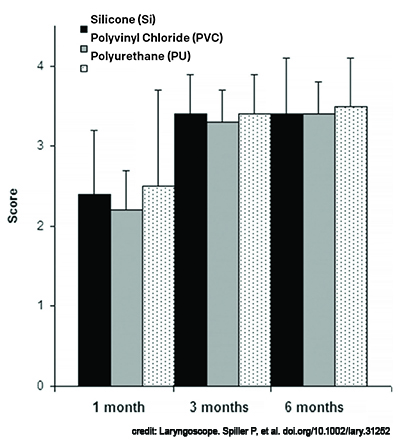 TRIO Best Practice articles are brief, structured reviews designed to provide the busy clinician with a handy outline and reference for day-to-day clinical decision making. The ENTtoday summaries below include the Background and Best Practice sections of the original article. To view the complete Laryngoscope articles free of charge, visit Laryngoscope.com.
TRIO Best Practice articles are brief, structured reviews designed to provide the busy clinician with a handy outline and reference for day-to-day clinical decision making. The ENTtoday summaries below include the Background and Best Practice sections of the original article. To view the complete Laryngoscope articles free of charge, visit Laryngoscope.com.
Explore This Issue
July 2024BACKGROUND
Tracheostomy is one of the most frequently performed operations in the world and is indicated as a treatment for a number of conditions, including respiratory failure, prolonged intubation, cancer treatment, and pulmonary toilet. When a tracheostomy is initially placed, a cuffed tube is normally inserted to allow for ventilatory support. Once the patient’s clinical condition permits and ventilatory support is no longer required, the tracheostomy tube is changed from a cuffed to a cuffless tube to facilitate speech and swallowing. Guidelines pertaining to the timing of the first tracheostomy change have been described; however, literature is scarce regarding the timing of subsequent changes for adults requiring long-term tracheostomies. Most manufacturers of tracheostomy tubes recommend they be changed monthly, but this has not been validated. Many patients rely on healthcare providers to assist them with tracheostomy changes, while some are comfortable performing changes on their own. In addition, long-term tracheostomy care often falls to the otolaryngologist, creating a need for best practices on this topic.
BEST PRACTICE
Based on current evidence, tracheostomy tubes should be changed every one to six months. Most tubes will develop bacterial biofilms, and tubes develop them at the same rate whether they are changed more or less frequently than once a month. Given the high rate of biofilm formation, there is limited utility to changing tubes more than once a month. The material degradation changes demonstrated at one month are not surprising given the known rate of biofilm formation. Significant degradation occurs from one to three months, while from three to six months there is no additional significant change in material degradation. For these reasons, tube exchanges may be extended up to six months. The timing of tracheostomy tube changes should be tailored to each individual case. Patients who have excellent local care are good candidates for having their tubes exchanged every six months. In those patients who are unable to care for their tracheostomies as diligently, more frequent changes, at three-month intervals, are likely beneficial given the material degradation shown to occur at this time.
